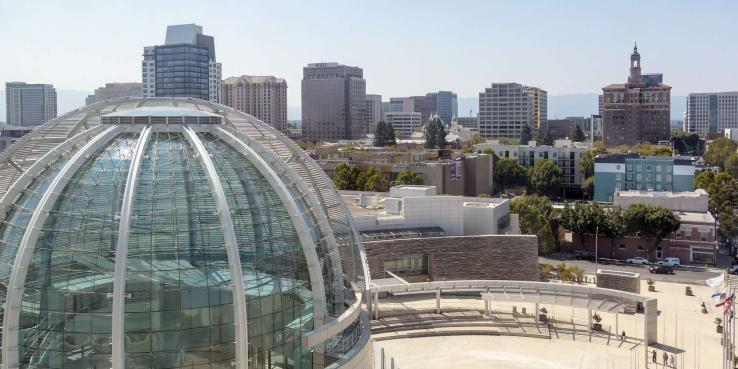Since launching Climate Smart San Jose in February 2018, the City of San Jose has been leading the charge to reduce air pollution, conserve water, and create a stronger and healthier community. This plan has begun to spur new policies and innovative techniques for reducing environmental impacts across the city. Recognizing that all sectors need to take part in meeting these goals, city staff proposed an ordinance that would increase commercial building energy efficiency through a transparent open-data benchmarking tool.
With the passage of Assembly Bill 802 in 2015, the State of California created an energy benchmarking policy for buildings larger than 50,000 square feet. AB 802 also required that performance metrics and energy use data be made publicly available. To implement the bill locally, the City of San Jose invited a cross-sector task force of large building owners and managers, energy consultants, environmental advocates, trade organizations and labor groups to explore a policy for benchmarking and transparency in energy and water use. The task force and city staff proposed a more aggressive goal than AB 802, requiring that all commercial and multi-family properties larger than 20,000 square feet report their energy use. SPUR served on the task force and sent a letter to the city in support of the proposal.
Through this ordinance, 2,500 buildings in San Jose will be required to openly record, track and identify their energy use. Although internal sharing of benchmarking data is helpful and important, public disclosure of a building’s energy performance adds a level of urgency that will prompt more building owners to recognize energy efficiency as a business imperative. Energy use is a primary driver of building operating costs, and sharing energy data publicly will encourage building operators to consider programs, processes and investments that increase efficiency and make good economic sense. Beyond benchmarking, the ordinance provides additional pathways for property owners and tenants to decrease their energy use.
Improving the energy performance of new buildings and establishing high-efficiency standards is a key strategy to reducing our carbon footprint and fossil fuel use, as promoted in SPUR’s report Fossil Free Bay Area. The report challenges Bay Area cities to model ambitious sustainable policies and practices, and San Jose’s ordinance is an important step in that direction.
As this policy moves forward, SPUR is continuing to push for standards and policies that promote resiliency and sustainability for both existing and future buildings. Now is the time to be incorporating blue and green infrastructure, such as adding solar panels and looking at how we can redesign roofs to capture storm water or serve as community gardens. There are many ways that San Jose can continue to make progress in realizing its Climate Smart plan.
Monitoring building performance and encouraging private sector involvement is an excellent step toward putting our climate aspirations into practice and showing how we can make tangible progress toward more sustainable and resilient development.
